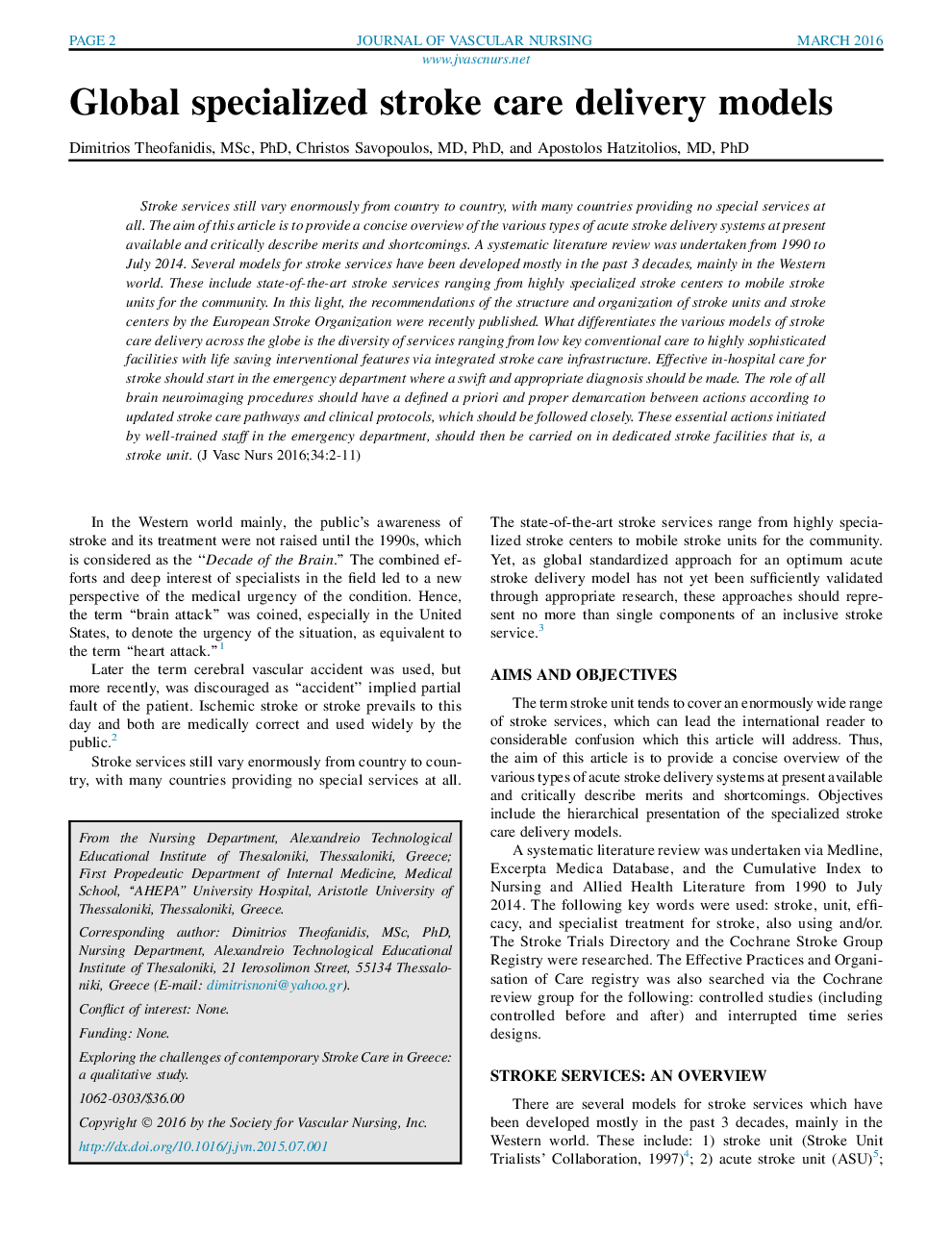| Article ID | Journal | Published Year | Pages | File Type |
|---|---|---|---|---|
| 2671936 | Journal of Vascular Nursing | 2016 | 10 Pages |
•Because the evolvement of stroke units, there is still no globally accepted care model.•Highly efficient models of stroke care include mobile stroke teams and telestroke.•Clinical guidelines and evidence-based care can standarize stroke services worldwide.
Stroke services still vary enormously from country to country, with many countries providing no special services at all. The aim of this article is to provide a concise overview of the various types of acute stroke delivery systems at present available and critically describe merits and shortcomings. A systematic literature review was undertaken from 1990 to July 2014. Several models for stroke services have been developed mostly in the past 3 decades, mainly in the Western world. These include state-of-the-art stroke services ranging from highly specialized stroke centers to mobile stroke units for the community. In this light, the recommendations of the structure and organization of stroke units and stroke centers by the European Stroke Organization were recently published. What differentiates the various models of stroke care delivery across the globe is the diversity of services ranging from low key conventional care to highly sophisticated facilities with life saving interventional features via integrated stroke care infrastructure. Effective in-hospital care for stroke should start in the emergency department where a swift and appropriate diagnosis should be made. The role of all brain neuroimaging procedures should have a defined a priori and proper demarcation between actions according to updated stroke care pathways and clinical protocols, which should be followed closely. These essential actions initiated by well-trained staff in the emergency department, should then be carried on in dedicated stroke facilities that is, a stroke unit.
